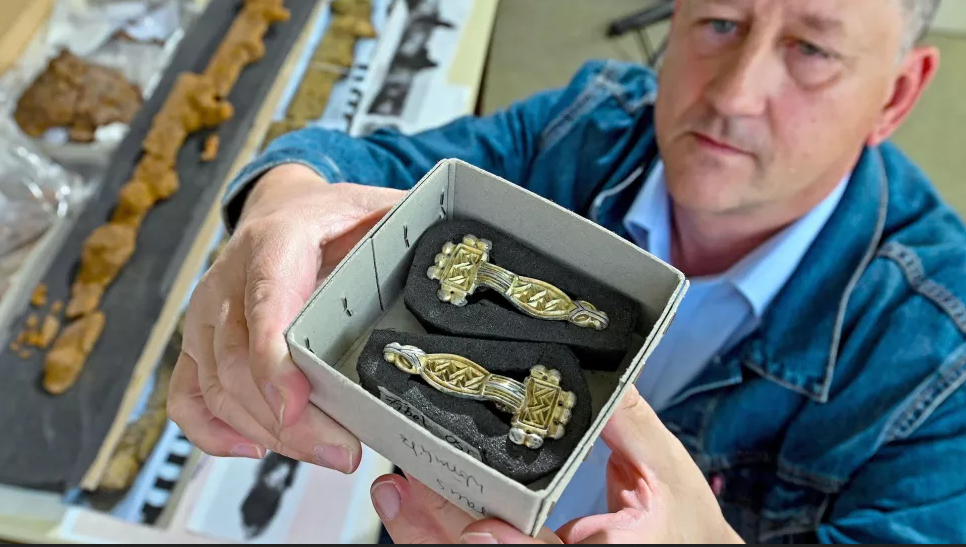
Various ancient cultures have unique burial practices such as mummification from Ancient Egypt, cremation practices from Vikings, and being buried with possessions for the afterlife. Archeologists recently discovered the tomb of a supposed "Germanic lord" surrounded by the skeletons of six women.
The tomb also had gold and silver artifacts with the remains of horses, cattle, and dogs, possibly indicating that the burial was a cult practice. There were also up to 80 graves surrounding the tomb, buried with riches such as weapons, glass, and gold.
Findings were confirmed by a team from the State Museum of Prehistory in Germany. The aristocratic estate was dated to nearly 1,500 years ago during the Thuringian Kingdom, a state within the Frankish Empire. At the time, The Roman empire was invaded by various Germanic tribes such as the Huns, Vandals, and Goths.
Possessions Indicating Germanic Aristocrats
Archaeologist Arnold Muhl shared that among the findings were silver robe clips, an iron shield boss, a gold coin, and other affluent Thuringians' possessions. The glass possessions were associated with the Gallo-Roman glassworkers who had mastered a particular technique. Muhl explained, "glass vessels were prestige objects and are only discovered in the burials of the wealthy elite."
Notable glassworks among the burials included a spindle whorl and a glass beaker for a floating lamp and garment clips. Some of the silver-gilded robe clips had pieces of textiles, which indicated that the owners were from a Germanic tribe.
Muhl clarified that the man was not a Germanic lord, "but it is fair to say that the richest of these burials certainly belong to the wealthy owner family of an aristocratic manor." The female jewelry also confirmed Germanic tribes such as the Alemanni and the Lombards.
The cemetery was dated back to around A.D. 470-540. The graves were linear and placed side-by-side in rows. 11 of the burials belonged to animals.
Read Also: Deviant Burials: Infectious Diseases or Something Scarier?
Applying Modern Analysis Techniques
Other media also reported that the "Germanic lord" was surrounded by six women, possibly his concubines. However, the genders of the six skeletons have yet to be determined.
There were also the remains of a cauldron which contained fragments of bronze. Despite other reports speculating that the ashes of the "lord" were meant to be burned in the cauldron, the archaeologists shared that "cremation was highly unusual" at the time.
The team analyzed the current site with modern scientific methods, including DNA analyses and strontium isotopes from the skeletal teeth. This technique helps determine where people came from because strontium isotopes from drinking water during early childhood stay on the teeth.
The last complete and untouched burial from the same period was discovered 40 years ago, said Muhl. Analyzing the burial site may give new insights into the Thuringian Kingdom and how the Germanic tribes were transformed during the Migration Period after the decline of the Western Roman Empire.
Read Also: 27 Stone Tombs Discovered in One of Egypt's Prominent Necropoli
Check out more news and information on Burials on Science Times.
"filled" - Google News
October 09, 2020 at 07:42PM
https://ift.tt/2STWRUx
Burial Site Filled With Glass, Silver, and Gold Dates Back to Ancient Kingdom - Science Times
"filled" - Google News
https://ift.tt/2ynNS75
https://ift.tt/3feNbO7
Bagikan Berita Ini














0 Response to "Burial Site Filled With Glass, Silver, and Gold Dates Back to Ancient Kingdom - Science Times"
Post a Comment